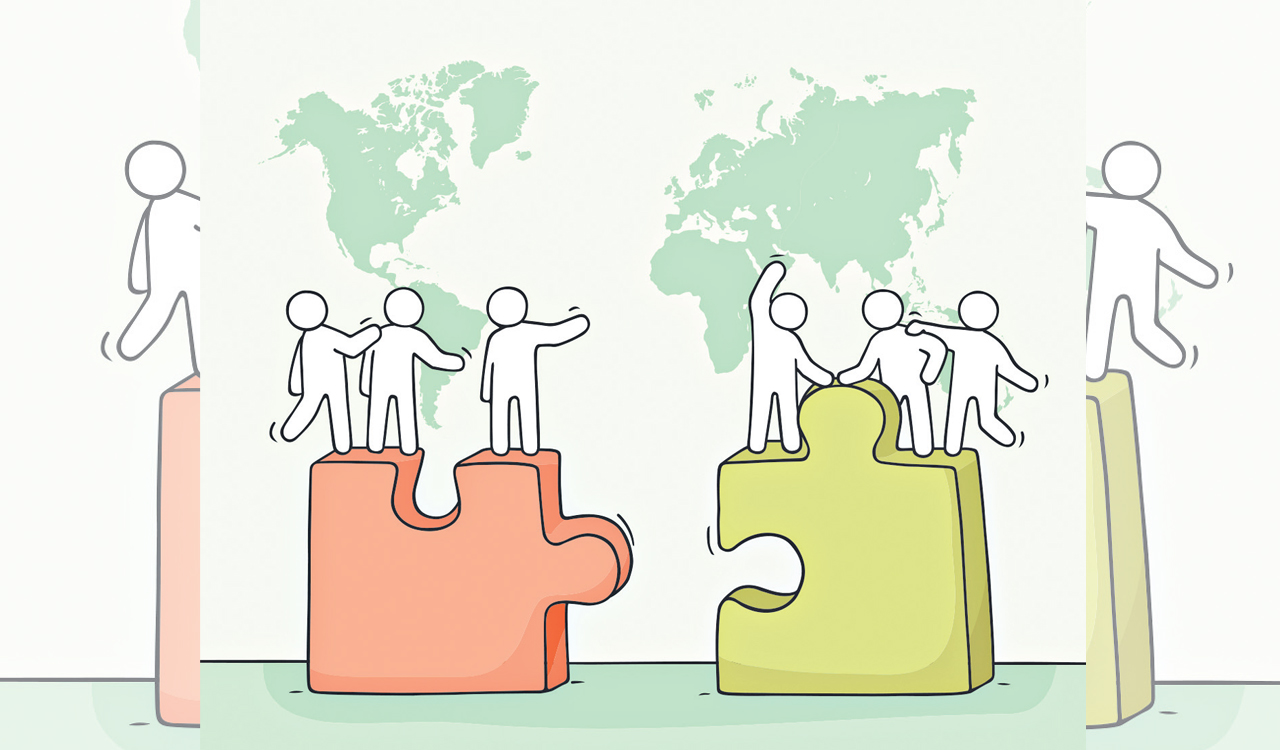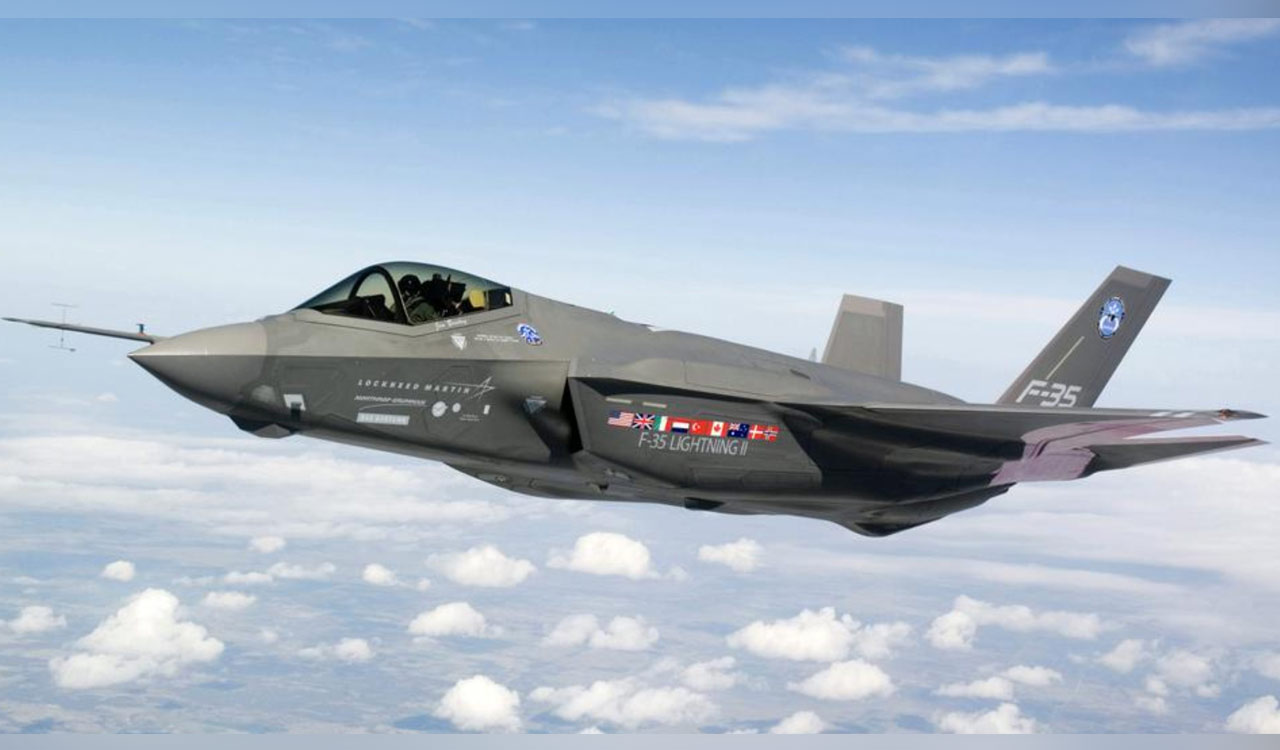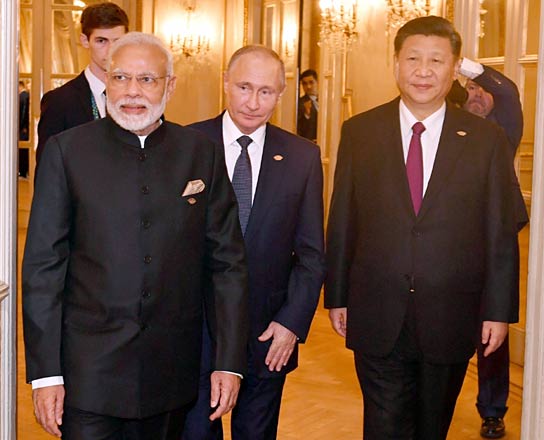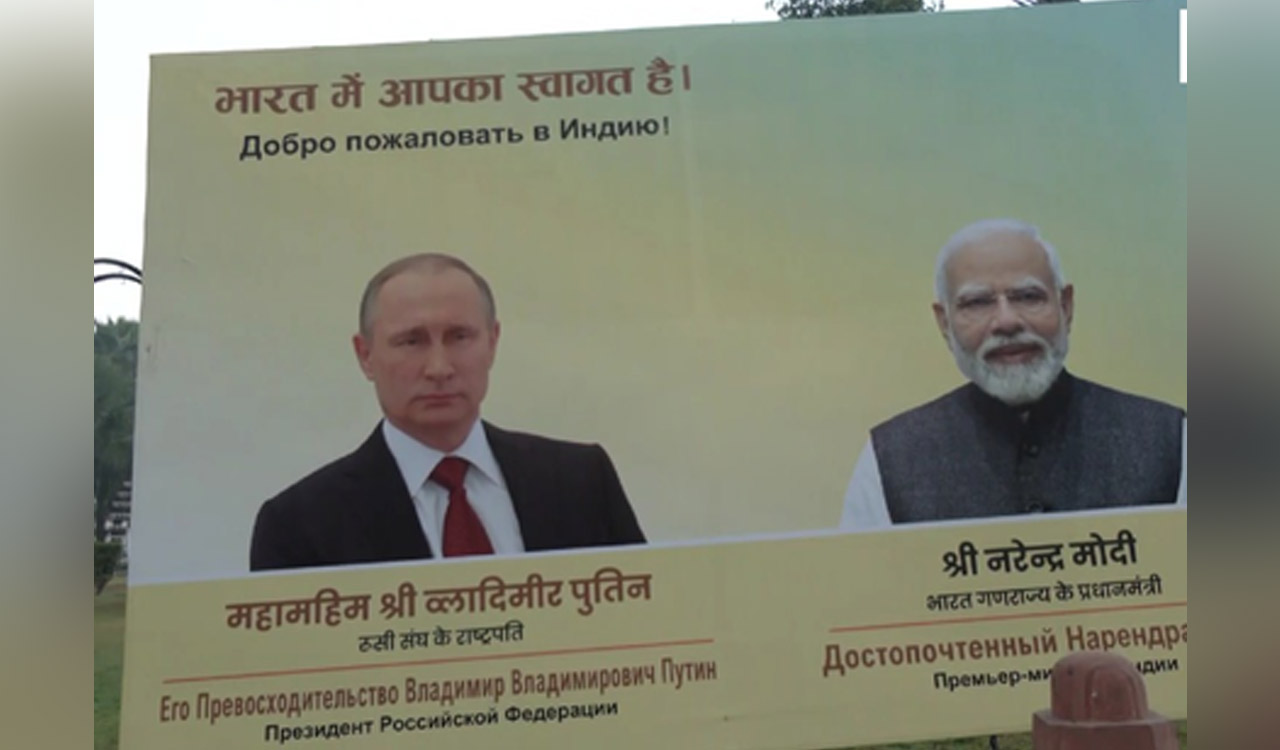Opinion: The curious case of Non-West
By dismantling the narratives of anti-West, New Delhi seems to be operationalising its balancing act

By Monish Tourangbam
India’s Foreign Minister S Jaishankar, earlier this year, speaking at the Munich Security Conference, sitting beside his co-panellist and American counterpart, Antony S Blinken called India “non-West” and not “anti-West”. On the other hand, the China-Russia alliance has categorically taken an anti-West front.
After his inauguration for a fifth term as President of Russia, Vladimir Putin made his first foreign trip to China to solidify their “no limits” partnership. In the joint statement released with his Chinese counterpart Xi Jinping, Moscow and Beijing declared “their opposition to the creation of closed associations and bloc structures in the Asia-Pacific region, in particular, military alliances and coalitions directed against any third party” particularly noting “the negative impact on regional peace and stability of the US “Indo-Pacific” strategy.”
Recently, at its 75th Anniversary Summit, the North Atlantic Treaty Organization (NATO) contented, “The deepening strategic partnership between Russia and the PRC and their mutually reinforcing attempts to undercut and reshape the rules-based international order, are a cause for profound concern.” Around the same time, much to the dismay of the West, Prime Minister Narendra Modi and President Vladimir Putin displayed bromance in Moscow at the 22nd India-Russia Annual Summit.
Non-West and its Avatars
Despite the optics of Prime Minister Modi’s visit to Russia, New Delhi is keen on emphasising that its bilateral and multilateral engagements are not directed against the West. Besides continuing to find value in groupings like the BRICS (Brazil, Russia, India, China, South Africa) plus its new members and the SCO (Shanghai Cooperation Organisation), India’s strategic embrace of the West and the United States in particular has grown spectacularly. India has stayed out of the China-initiated Regional Comprehensive Economic Partnership (RCEP) and joined the US-initiated Indo-Pacific Economic Framework (IPEF).
Moreover, in the evolving architecture of the Indo-Pacific region, India is squarely with the Quadrilateral Security Dialogue (Quad) and stands in unison with the US, Japan and Australia for a “free, open, inclusive and rules-based” Indo-Pacific. Japan and Australia are also interesting candidates in the West and non-West dichotomy. At the dawn of the 20th century during 1904-05, when the Japanese empire defeated the Russian empire, many heralded the rise of an Eastern power against a Western power, but by then, Japan had fully embraced Western technologies and development models under the Meiji restoration. Since the end of World War II, it has strategically remained much closer to the West. Australia, although a continent by itself, through history and geopolitics, has remained a steadfast ally of the West.
However, two of the strongest pillars of the non-West are at odds with each other. China’s border aggression has pushed India-China relations downhill, to one of its lowest points in recent times; and more importantly, making it all the more prudent for New Delhi to strike a strong strategic bargain with Washington to prevent Beijing’s unchecked rise.
However, the non-West is not entirely new to the practice and study of international relations, although the material deficit of countries like India and China in their early years of independence and post-colonial experience did not allow such narratives to take off. In the call for developing an Asia for Asians, the New International Economic Order (NIEO), the broader core-periphery question, the early optimism for an Asian century predicated on the economic rise of India and China and through the latest Global South imperative, the non-West has echoed itself in many avatars.
Pressing Problems
However, a divided Asia and China’s excessive ambitions to shape a unipolar Asia in a multipolar world have erected Great Walls against the chances of any cohesive Asian century or a viable non-West at least in the real world of policies and strategies, if not in academic discourse. The West and non-West dichotomy also clearly permeates the North-South dialogue, and the rise of the Global South as a region in need of sustainable growth and development.
A divided Asia and China’s excessive ambitions to shape a unipolar Asia have erected Great Walls against a viable non-West
The high point of India’s G20 presidency was in championing the concerns and needs of the Global South, but the Sustainable Development Goals’ (SDGs) targets are to be achieved through North-South cooperation and not by pushing antagonisms further. The case for reformed multilateralism and the imperative to shape multilateral institutions for a multipolar world means that the erstwhile domination of the West in global and regional platforms of governance is giving way to the search for more inclusive solutions. The most pressing problems of the future, including climate change and green economy, global food and health security, resilient value supply chains and managing new technologies will require a more concerted effort to build synergies between the non-West and the West, amid the widening geopolitical schisms of new great power rivalries. India’s rise as a material and normative power in the non-West comes at a time when it finds it pragmatic to embrace the West to manage its security challenges in the non-West, most primarily coming from China. To counter Beijing parading an anti-West narrative, New Delhi has found more resonance in working with partners in the West. Hence, juggling these seemingly contrasting paths and simultaneously promoting its strategic interest will remain the task for India’s planners and doers.
Civilisational Powers
The rise of India and China has also given more currency to the notion of civilisational powers in the lexicon of international relations and the search for non-West experiences to inform the future of global governance. However, all civilisational powers do not necessarily follow the same path to rise. The kind of characteristics civilisational powers acquire and exhibit in contemporary inter-state dynamics and their role in shaping the multipolar world is, hence, a matter of critical inquiry.
Such an infusion of diverse and inclusive assertion in policymaking also coincides with a broader call in the academic discipline of International Relations for non-western theories and perspectives. While the non-West in International Relations discipline and academic debates largely reflect an imperative for inclusiveness and diversity in teaching and research, it seems to serve a very distinct purpose in the policy world.
By championing the non-West and dismantling the narratives of anti-West, New Delhi seems to be operationalising its balancing act, and the practice of strategic autonomy to manage its rise amid partnerships straddling the West and the non-West.

(The author is Director at the Kalinga Institute of Indo-Pacific Studies. He is a regular commentator on International Affairs and India’s Foreign Policy)
Related News
-
Opinion: The Real Estate Republic of Telangana: A $3-trillion mirage built on licensed loot
45 mins ago -
High voter turnout marks gram panchayat polls in erstwhile Medak
58 mins ago -
BRS bags key gram panchayats in Suryapet dist
1 hour ago -
Adilabad: 11 cases booked against violators of poll model code
1 hour ago -
Telangana likely to hold EAPCET 2026 in first week of May
1 hour ago -
DGP reviews security for Lionel Messi match at Uppal stadium
1 hour ago -
Dasoju Sravan tears into Revanth Reddy over “venomous” remarks at OU
1 hour ago -
Maternity penalty: Female PG medical doctors forced to pay Rs 15,000 to rejoin courses in Telangana
1 hour ago




